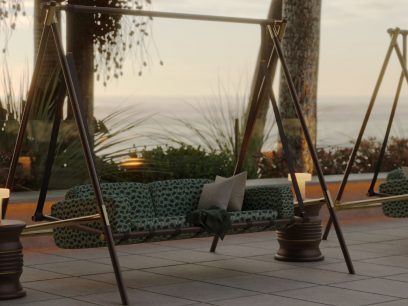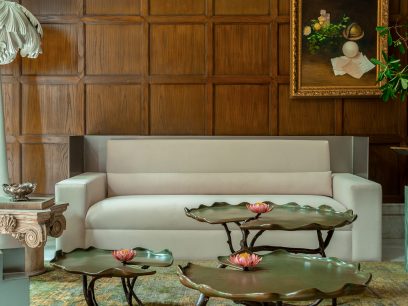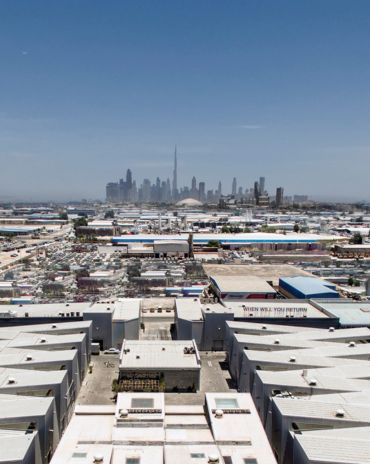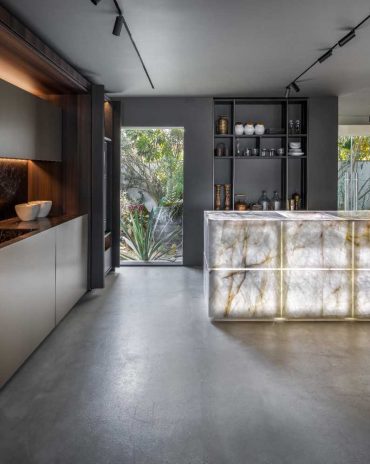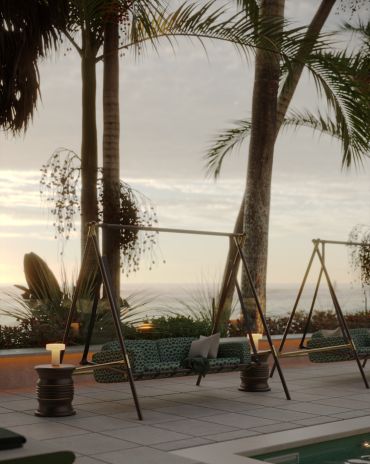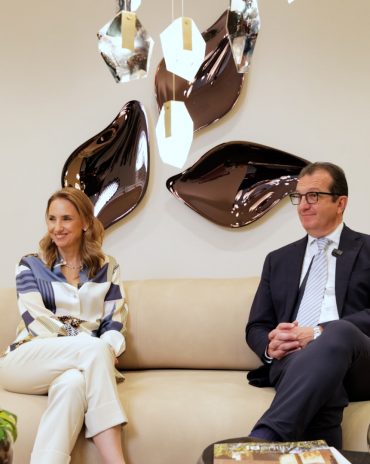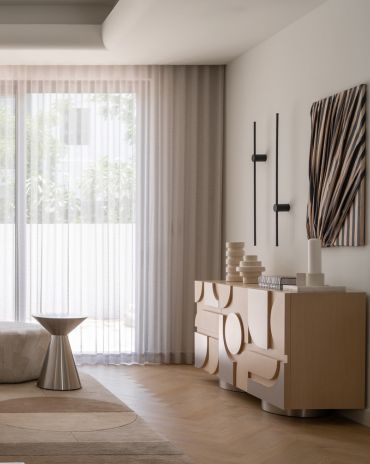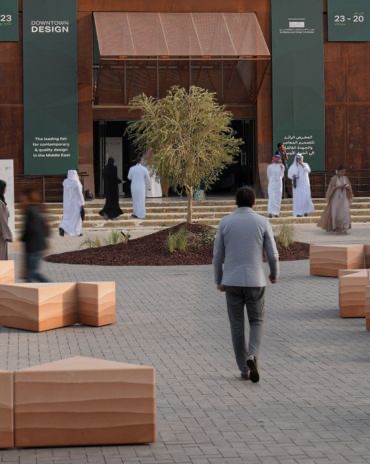Copyright © 2025 Motivate Media Group. All rights reserved.
Paving the Way Forward
Architect and former Abu Dhabi resident Vinu Daniel demonstrates how architecture can be a force for good.

Ask Vinu Daniel, the founder of Wallmakers, about trends in sustainable architecture and he will reject the idea. “We are not influenced by trends; rather, our ideologies, the client’s interests and, importantly, the site and its context, influence and guide our work. We have noticed quite a few trends in sustainable architecture, but try not to get too influenced by these, because their impact can be fleeting, and our focus has always remained on the more substantial and enduring factors,” he says.
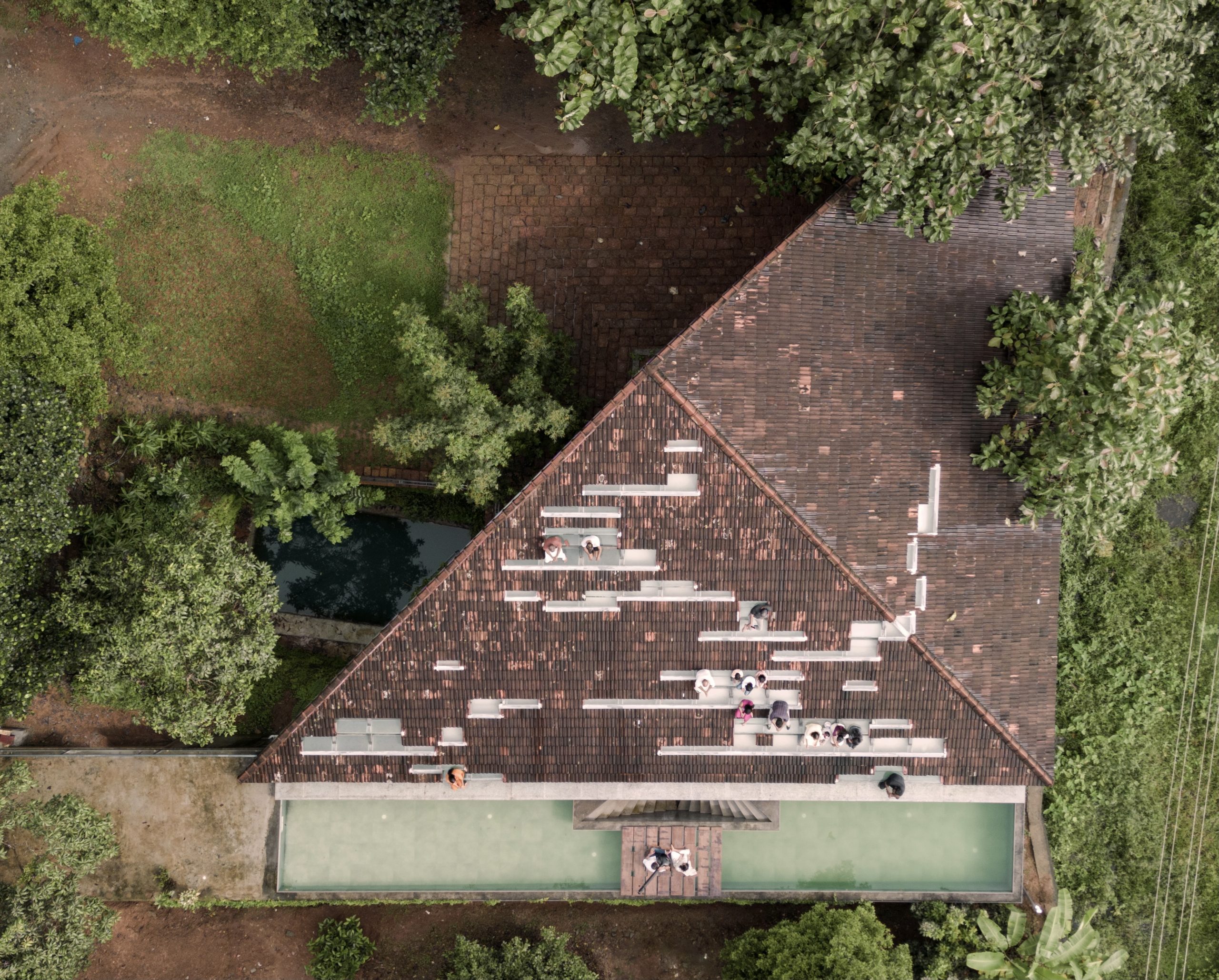
This philosophy ensures that Wallmakers’ creations are timeless, sustainable and deeply rooted in their environmental context. An example is the 3-Minute Pavilion that Daniel showcased for the Sharjah Architecture Triennial 2023. The pavilion was constructed from 1,425 discarded tyres packed with desert sand, highlighting the potential of using local and waste materials, not only serving as a passage that emphasises the massive amount of waste humans produce but also demonstrating how these materials can be repurposed into beautiful, habitable spaces.
Currently, Daniel’s firm is engaged in a variety of projects, including schools, commercial spaces, residences, hospitality venues and cultural buildings. Regardless of the project’s scale or type, the approach remains consistent: a thorough understanding of the site and its natural context. “At the start of every project, extensive research and development are conducted to better understand its environment, explore what the area within a five-mile radius offers, adhere to our ideology of sourcing materials locally, and develop designs that harness the natural conditions of the site,” Daniel explains.

This meticulous process minimises environmental impact and maximises sustainability. A prime example of this is Chuzhi, a project located in Shoolagiri, a village in Tamil Nadu, India. Chuzhi features swirls of precast poured debris earth-composite bottle beams fashioned from 4,000 discarded plastic bottles. The design creates a subterranean home that integrates seamlessly with the rocky topography and thick vegetation, preserving the natural ecosystem while providing a private, comfortable living space.
Advancements in sustainable materials and construction techniques are at the heart of Wallmakers’ philosophy. Daniel and his team continually experiment with unconventional materials such as waste, discarded tyres and even toys. “We consider this a crucial factor that is going to mould the future of the construction industry,” says Daniel. These innovations enhance the durability and safety of the buildings while showcasing the potential of alternative materials in modern architecture. The Nisarga Art Hub, for example, is a community residency for art and cultural events. Located near a paddy field, the Hub features traditional Kerala roofs modified to accommodate skylights, providing natural light while maintaining the roofs’ insulating properties. The walls are made with Wallmakers’ patented Shuttered Debris Wall technique, which uses construction debris and local soil, demonstrating the effective use of sustainable materials.

“Old technologies that have become obsolete are subtly modified and revived; new technologies are incorporated for more efficient implementation and improving comfort,” Daniel notes. This blend ensures that the studio’s designs are both cutting-edge and rooted in proven methods, optimising efficiency and sustainability. An illustrative project is Toy Storey in Vadakara, North Kerala. This circular home features a veranda supported by toys and old Mangalore tiles, utilising 6,200 discarded toys to preserve the childhood memories of the community. The central courtyard and the composite CSEB-Toy Jaali wall allow for constant cross-ventilation and better insulation, exemplifying the integration of traditional and modern techniques.

Daniel acknowledges the significant challenges that lie ahead in sustainable architecture. “Building sustainably is a challenge even today, as people would generally prefer the easier but unsustainable way to get their building done,” he observes. Wallmakers is preparing to address these challenges by continuously innovating and advocating for sustainable practices. Incorporating advanced techniques while maintaining affordability and designing to adapt to climate change impacts are ongoing challenges that the firm actively tackles.
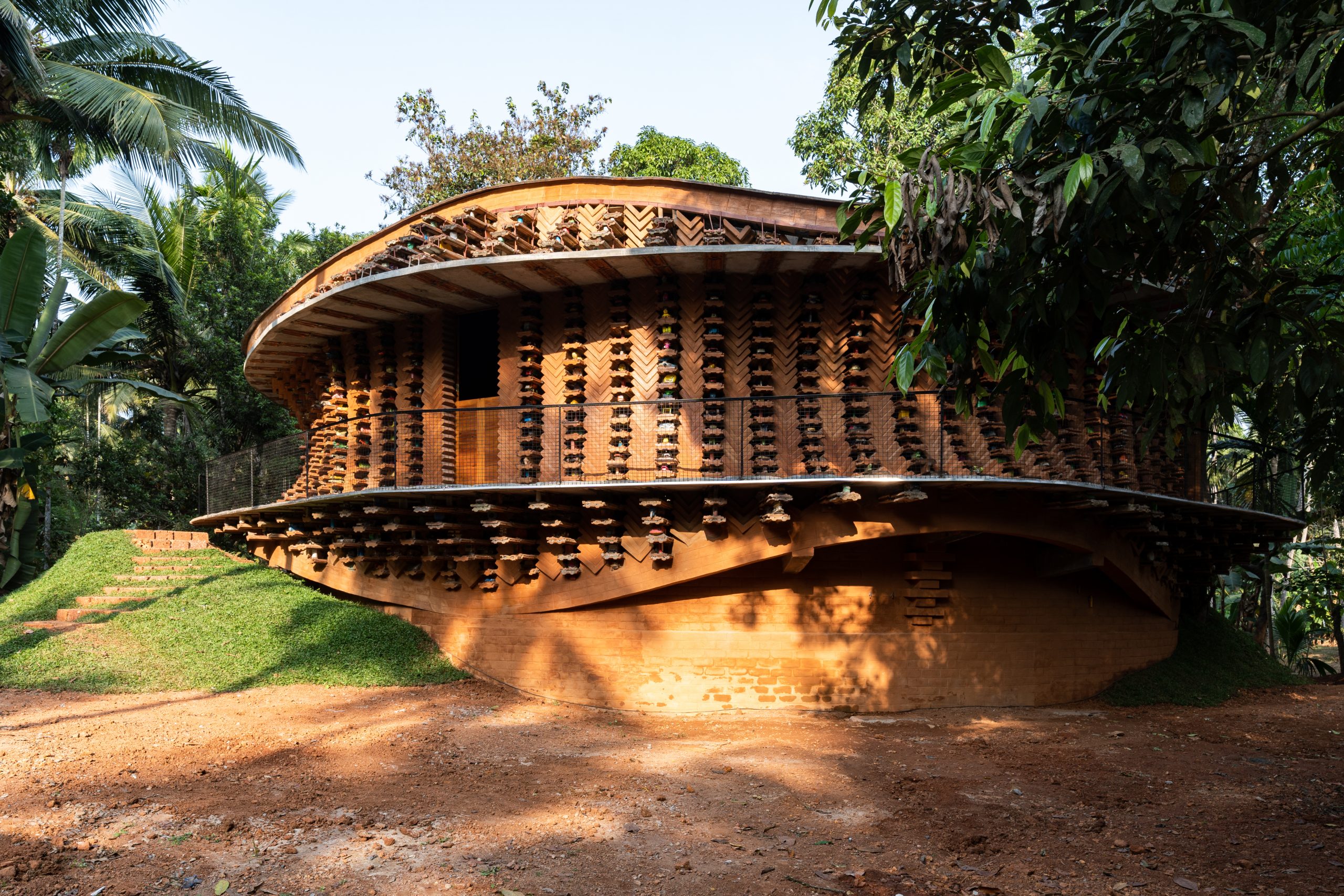
Vinu Daniel believes that architects have a significant responsibility in promoting sustainability. He is critical of the current education system for not emphasising this responsibility enough – but remains hopeful. “We see a lot of architects, after a few years of practice – or, very rarely, even at the beginning of their career, like me – come to understand the role we play in society and in preserving our planet,” he reflects. Daniel looks forward to seeing more architects make better, more sustainable choices, driving the industry toward a greener future.
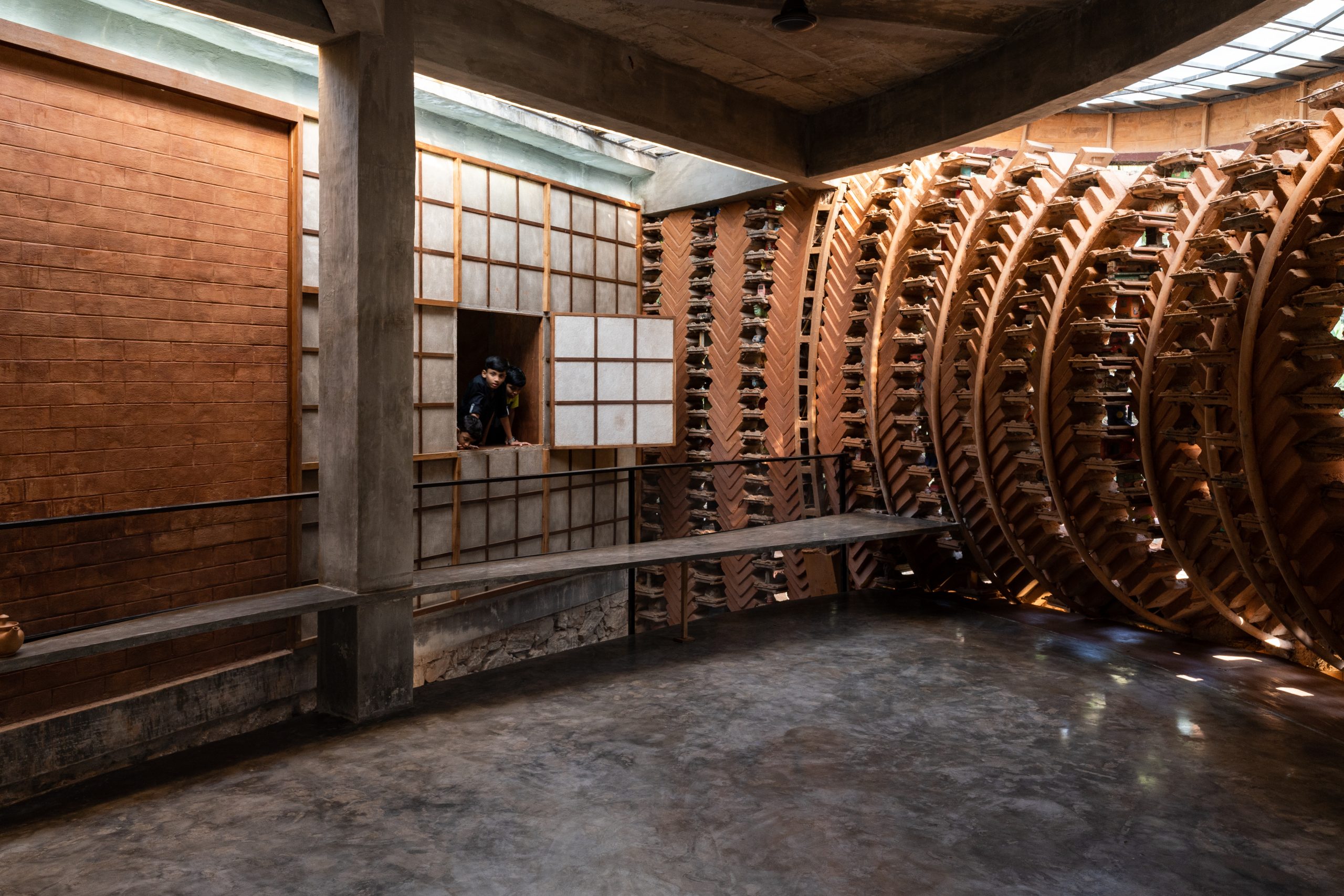
Through Wallmakers, Vinu Daniel continues to demonstrate how architecture can be a force for good, blending aesthetic elegance with environmental responsibility. His unwavering commitment to sustainability, as well as the innovative use of materials and a holistic approach to design, set Wallmakers apart as a leader in the sustainable architecture movement.
Read more about Vinu Daniel’s work here.
The Latest
Reviving Heritage
Qasr Bin Kadsa in Baljurashi, Al-Baha, Saudi Arabia will be restored and reimagined as a boutique heritage hotel
Alserkal x Design Miami: A Cultural Bridge for Collectible Design
Alserkal and Design Miami announce one of a kind collaboration.
Minotticucine Opens its First Luxury Kitchen Showroom in Dubai
The brand will showcase its novelties at the Purity showroom in Dubai
Where Design Meets Experience
Fady Friberg has created a space that unites more than 70 brands under one roof, fostering community connection while delivering an experience unlike any other
Read ‘The Winner’s Issue’ – Note from the editor
Read the December issue now.
Art Dubai 2026 – What to Expect
The unveils new sections and global collaborations under new Director Dunja Gottweis.
‘One Nation’ Brings Art to Boxpark
A vibrant tribute to Emirati creativity.
In conversation with Karine Obegi and Mauro Nastri
We caught up with Karine Obegi, CEO of OBEGI Home and Mauro Nastri, Global Export Manager of Italian brand Porada, at their collaborative stand in Downtown Design.
The Edge of Calm
This home in Dubai Hills Estate balances sculptural minimalism with everyday ease
An interview with Huda Lighting at Downtown Design
During Downtown Design, we interviewed the team at Huda Lighting in addition to designers Tom Dixon and Lee Broom.
Downtown Design Returns to Riyadh in 2026
The fair will run its second edition at JAX District
Design Dialogues with KOHLER
We discussed the concept of 'Sustainable Futures' with Inge Moore of Muza Lab and Rakan Jandali at KCA International.

